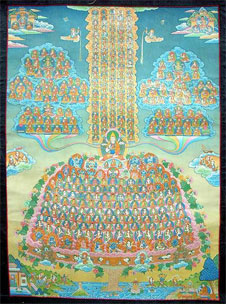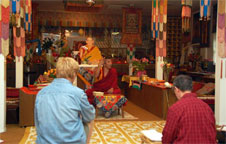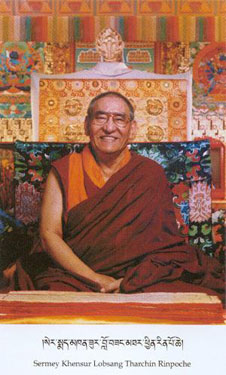Response From the Field
The responses to the Steppe Notes have been so numerous
and interesting that I am considering switching them from the sidebar
to one of the main-body articles. In any case, here is a wonderful
story, article and MP3 that Alta shared about his grandfather.
“… my grandfather loved horses and all animals.
Years ago, he purchased a horse and attempted to cross from
Philadelphia to New Jersey where we lived, to present the horse as a
gift to my parents. He first tried crossing the Benjamin Franklin
Bridge on horseback. He was turned away and then attempted to cross
another bridge, the Tacony Palmyra Bridge, which is about 20 more miles
away. This time, for some reason, they let him cross. Those who know
the Philadelphia area are quite familiar with this long trek. This
story is so unique that you really could not make this up if you tried.
I still remember him on that horse and how we all tried to ride it the
same way as my grandfather but could not duplicate his skill. …”
Mounted Kalmucks on Shackamaxon Street
by Leonard Kress
I’m thinking of the mounted Kalmucks on Shackamaxon
Street, how in the world they got here, Stalin’s bodyguards, despised
by him. By here I mean Fishtown, where defunct Domino Sugar coughs up
syrup into the Delaware, the old treaty park, wedged between ports, the
north one full of Latin grapes, the south with its rusted cranes and
pier-front courts and condos. Its pleasure dome for bad-backed
longshoremen with mangled knees and missing digits. I’m thinking of
that one old Kalmuck.
Everyone mistakes him for a Chinaman. He’s mounted on
his pony, too small to tug a produce cart through streets and alleys of
Harrowgate and Fishtown--chicken squawk and pigeons, scrap heap and
gabardine hawk. Absorbing the shock of railroad shunt, trolley track,
pothole, and buckled cobble, like a newly reconditioned strut. He
travels his fourfold path to the Lamaist Temple on Second Street, where
this may or may not be the day he opts for the Buddha’s Great
Renunciation.
Courtesy: www.philadelphiastories.org
/mounted-kalmucks-
shackamaxon-street
About The Author
Leonard Kress lived in and around Philadelphia for
more than 35 years--Port Richmond, Fishtown, Harrowgate, Frankford,
etc. Now he lives in the Great Black Swamp of Northwest Ohio. His
latest collection of poetry is ORPHICS, from Kent St. U. Press.
Alta’s memorat was posted in 2005 and Kress’ in 2007.
here is my Grandfather singing
Alta deer ni garakh ni’ (Reaching the Pinnacle of the
Altai).
and here is what it is about from Sanj Altan:
The song starts out plaintively about reaching the top
of the Altai Mountains, the ancestral homeland of the Western Mongols
from which the Kalmyks originally came from.
The song goes on, and says once on top, looking out, the
entire precious world comes into view. At this expansive moment with
the intensity of feeling at the awesomeness of nature and the world,
then the singer extols his love and thoughts of his mother and father,
starting from the time when he was just a toddler playing at the feet
of his parents.
It’s basically a song of love and memory of one’s
parents. Mongols all have these motherly love songs; this is one of
those which are particularly beautiful when sung by the right person.
|
|
Steppe Notes 16-2010
Rashi Gempil Ling

A
Gelug "Refuge Tree" thanghka
(icon). Tsongkapa is the figure in
the center, and at his center there
is an image of the Buddha. The
purpose of the image is to help in
visualization of going for refuge.
Source: unknown
One thing I’ll not miss, when my wife and I move to New
Mexico, is the New York traffic. One would think that going outbound to
New Jersey on the George Washington Bridge at 7AM on a Sunday would be
problem free. And, indeed, the approach to it was the easiest I have
had in nearly a year of journeying, but then, right in the middle of
the Bridge traffic was completely stopped, for some ten minutes. Oh
well,
The rest of the trip to Howell was uneventful. This day
I decided to devote to observing normal Sunday activities at the Rashi
Gempel Ling temple. I also was hoping to get a nice, sunny, day so that
I could get better pictures of the interior by using the morning sun to
fill the temple with light from the East. Unlike Tashi Lunpho or Nitsan
(neither of which seem to have regular Sunday activities) Rashi Gempel
Ling has two activities each Sunday. At 10 AM there is instruction in
beginning Buddhism conducted by Geshe Wangdu (a Tibetan monk) and at 12
noon Lamrim (Tibetan, “stages of the Path.”) instruction
commences with a recitation of the “Necklace of Good Fortune” (the Jorcho).1 The recitation and instructions that follow are led by
Art Engle a first generation Buddhist2 married to a
Kalmyk lady.
As luck would have it, by the time I arrived in Howell
the bright sunny morning in New York turned into a rainy morning. I
even had to abandon my quest of photographing the Our Lady of Tikhvin
church on 3rd Street (a few blocks away from Rashi Gempil) out of fear
of drowning the camera. Photography inside Rashi Gempil without flash
also seemed a bit optimistic. I took a few shots but mostly decided to
wait for the Geshe to begin instructions.

"Refuge
Tree" thangka in Tashi Lunpho temple
photo: nolefer
The program began about 10:15 with a recitation. I
picked up a folder with the "The Exalted Three Heaps Sutra" that was in
a pile near where most folks were sitting, but Cindy, seeing my
confused look, as the recitation began gave me a folder with the proper
materials. This folder contained a sequence of photos showing how to
form one of the ritual hand gestures (mudras) and prayers written in
Tibetan, transcribed into Latin script, and with translations
following. We read the "Offering of the Mandala" and "Refuge and the
Wish" prayers.
After the recitation Geshe began his Dharma talk. It
consisted of two parts. The first, began with Geshe talking about
taking refuge.3 His major point was that in every
religion one "goes for refuge" (puts one’s faith in), the major
difference is in what one uses for "refuge." In Buddhism the ultimate
goal is to go for refuge in "Enlightenment." Until one become
Enlightened one goes for refuge in the Buddha, Dharma, and Sangha. I
was surprised that in a "Beginners Class" the Geshe was essentially
going for rather sophisticated epistemological (epistemology—defining
the nature of ultimate truth) arguments—not an easy subject for anyone.

Geshe
emphasizing a point as students listen
Photo: nolfer
The difficulty in communication was reinforced by
Geshe’s difficulty with English, which he did not try to overcome, but
relied, instead, on the help of one of the students to interpret from
Tibetan to English. In practice, it meant, that after a few sentences
there would be a five minute discussion about the best English term to
convey the meaning of a Tibetan word. This made following the narrative
and logic quite challenging.
Geshe felt that disconnect, and every so often he would
ask if everyone understood what he said. The students were very polite
and nodded their heads in affirmation, and only one younger woman had
the courage to say something when she could not understand Geshe’s
point. Every time the students nodded their head to indicate that they
understood, the Geshe would laugh. This went on for about 45 minutes.
Then, suddenly, Geshe said that it was time to get to
the subject of the day which turned-out to be a discussion on the book
that the class has been reading. The earlier pattern repeated itself.
Again, the Geshe and the interpreter would try to find the best
possible English word for a Tibetan term and then proceed further in
the discussion. This manner of teaching went on to after 12:00. The
people for the next class were beginning to show up. Geshe ended the
class, we all chanted a prayer and the class was over. Everyone thanked
the young man who served as the interpreter.
The next class began after a few minutes break. This
class was lead by Artemus "Art" Engle. Dr. Engle has a Ph.D. in
Buddhist studies from the University of Wisconsin and was the first
American student of the long-time abbot of Rashi Gempil, Geshe Lobsang
Tarshin (1921-2004) whose incarnation was recently announced by the
Dalai Lama’s office.

Geshe
Tarchin past abbot of Rashi Gempil 1972-2004
Image: Courtesy Mahayana
Sutra & Tantra Center
The class began with the chanting of the prayers for
Jorcho. That part lasted almost an hour, after which Art began his
Dharma talk.
The subject of the talk was Lamrim (Tibetan for “stages
in the path”), as expounded in the three volume translation of
Liberation in our Hands by Kyabje Pabongka Rinpoche (1878-1941). Lamrim
is a Tibetan text that presents the path to enlightenment as originally
developed by the Buddha and codified by Atisha in the 11th century in
the book A Lamp for the Path to Enlightenment (Bodhipathaprad?pa).Each
major Tibetan school of Buddhism has its own interpretation of Atisha’s
work. The version that has been canonical for the Gelug school is one
by the founder of the lineage Je Tsongkhapa (1357-1419).
As an outsider, the Dharma talk struck me as if I came
in during the middle of a conversation (which, in a way, I did). Most
of the talk was a discussion of specific passages in the book which I
had not read, and since I had no knowledge of past talks I was pretty
much without any context. Retaining the teaching under such
circumstance was quite difficult even with the rudimentary notes that I
took. My internal critic was quietly grousing about the lack of
"narrative arc" in the talk, and the mind began drifting.
Nearing the ending of the talk Art began talking about
thangkas and made the statement that in Tibetan Buddhism an aesthetic
appreciation of a sacred image is discouraged. An image of a sacred
subject or personage was sacred, whether made of gold or wood. Praising
an image implied the possibility of criticizing it, which means one
would be criticizing a holy object. Suddenly, I was all ears—a sacred
image is not to be judged by any criteria.
Suddenly, I understood where my Thay’s (teacher)
patience for the less stellar class presentations came from—every
effort at conveying the Dharma is as important as any other. Every
expression of the Dharma is to be accepted as a gift, and as it is done
in most 12-step programs, one accepts that which is useful at the
moment, and allows the other material to rest. This is how the listener
participates in the event. The teacher teaches to the best of the
teacher’s ability and the student listens to the best of the student’s
ability.
Close to 3:30 Art ends the class; we chant some more
prayers from the Jorcho and then everyone takes a break. I am invited
for refreshments but I am trying to find Pawel, so as to give him my
camera for the project. We miss connections and I drive-off home. At
the George Washington Bridge I get into the most horrendous traffic
jams yet—an hour to cover four miles. I feel sorry for the folks in the
very expensive cars to pay 40 plus thousands for a car and then be
stuck in the same jam with a humble truck like mine must be galling and
frustrating. No wonder the folks in the expensive cars are so
aggressive—Audi, Cadillac, and BMW SUV’s are the most aggressive.
Now if I can apply the principles taught by Art this
afternoon to all aspects of my life I truly can call myself a Buddhist.
1 The
Jorcho appears to be a kind of devotional practice (worship service in
Christian terminology) that is a summary of the Lamrim practice.
2 I
have struggled for some time in attempts to find a word, or phrase, to
label folks who come to Buddhism out of a non-traditional Buddhist
community. I never liked the word "convert" with its possible negative
implications and using labels of ethnicity also seemed to be less than
ideal. "First generation Buddhist" or "1st gen" seems like a good
substitute.
3 In
Buddhism "taking refuge" means relying on the example of the Buddha,
the words of the Buddha, the help of the community to achieve ones
religious goals (Taking refuge in the "Three Jewels"—Buddha, Dharma,
Sangha). Most Buddhist traditions stress that "liberation" i.e.,
"salvation" in Christian terms, comes from within and not from an
external source.
|





